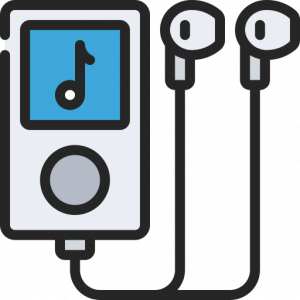
April 3, 2023, by Helen Whitehead
Creating audio and podcasts
I got some really good tips on creating audio and podcasts in education, from the recent Future Teacher webinar focusing on audio.
Speakers included Andrew McLaren. Edinburgh Napier, Sheila MacNeill, Jane Secker, and Mark Childs. Here are, with thanks, some of their tips.
The preparation time needed (at least at first) means it can be a heavy workload. Andrew estimated a 60:1 ratio for prep time to audio length. For example:
A 22-min asynchronous podcast took:
- 10 hours of scriptwriting,
- 2 hours of recording,
- 10 hours of editing & mastering.
He though it did get easier – a bit – and the more “authentic” kinds of recordings of what’s already going on takes less time than a custom audio or podcast with scripts and music.
So why do it?
Mark Childs suggested:
- To reach an audience for one’s work.
- To learn about one’s discipline through the process of talking to other people.
- A mechanism for finding a space for performance, or for using creativity in a new field.
- To establish time to collaborate with others by co-creating content.
Some example podcasts:
- Copyright Waffle https://copyrightliteracy.org/resources/copyright-waffle/
- Pedagodzilla https://twitter.com/pedagodzilla
- Exquisite Education https://exquisiteeducation.podbean.com/page/3/
- Perplexagogy https://open.spotify.com/show/17FmSh6shjt6qzUS5ygaXr
 What about length?
What about length?
A reasonable length for asynchronous podcast is 20-25 minutes. ‘Audiobook’ readings can be up to 90 minutes. ‘Mini’ versions (e.g., a 3 minute version of a 25 minute podcast) get listened to about ten times more from recent experience.
Thirty to 60 mins seems to be a length that emerges if the podcast digs into content, to flesh it out sufficiently, but there’s no doubt the shorter ones have a bigger audience.
Why is audio so powerful as a tool for development?
- Because of the accessibility and affordability of the medium for creators.
- The audience are often time poor, and listening to podcasts can be done alongside other things (running, commuting, last thing at night going to sleep…).
- Podcasts are essentially conversations – relaxed and fun, with emergent discoveries along the way.
Hence perhaps the key issue is getting the formality v. informality right
Top tips
- Have some areas of focus, rather than a script.
- A format and structure are important – successful podcasts all have something recognisable – whether it’s a menu, or a favourite fact – it gives a sense of where you are in the episode.
- A duvet is a good way to dampen external sounds! As in sitting under a duvet. 😂
- Editing is key to audio quality.
- Everyone loves a jingle – except those who don’t!
Tools
Riverside have just started offering a free transcription tool (results may vary).
Enhance voice recordings for free: Adobe’s Speech enhancement makes voice recordings sound as if they were recorded in a professional studio.
More resources
Future Teacher webinars – the recording will appear here.
Thanks to juicy_fish for the icons.
Next Post
Easter eggs!No comments yet, fill out a comment to be the first

Leave a Reply